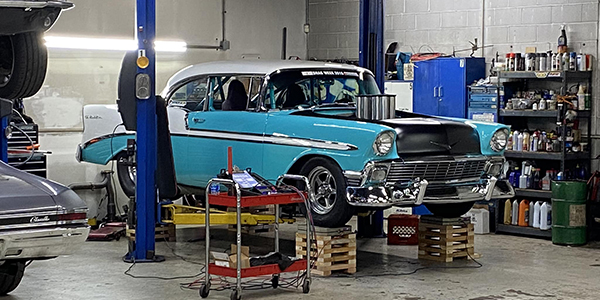As I’m sure many of you are seeing more of lately, a ton of “news” and predictions are constantly swirling about electric vehicles and autonomous vehicles taking over the new-car landscape. It’s all 2025 this or 2030 that or such and such will happen by 2050. If you ask me, I’m a “I’ll believe it when I see it” kind of guy when it comes to all of the EV and autonomous car talk.
That’s not to say I’m ignoring new automotive technologies coming down the pipeline, but I tend to be more of a realist when it comes to how quickly things will change in the auto world from a consumer standpoint. Not to mention the many major infrastructure changes needing to still happen for a large majority of these predictions to actually occur. That hasn’t stopped anyone from predicting though.
Case in point, I opened an email a few weeks ago that hypothesized ‘driving a car could be outlawed by 2050!’ That made me pause. Sure, someday driving yourself won’t be necessary, but by 2050, and by law?
That not only implies today’s autonomous vehicles have improved tenfold in their capabilities, but have also gotten proficient at driving in poor weather conditions such as heavy rain, snow and ice, and that production of autonomous vehicles has reached a point where nearly 300 million cars can be replaced by autonomous ones in 30 years.
Of course, the report mentioned none of those facts – only the “fact” that autonomous vehicles will be safer than human drivers, therefore it could be a reality that manual driving becomes outlawed by 2050. The study says by 2024 autonomous vehicles will match or exceed human driver safety and by the 2040s they won’t be involved in a single collision.
Obviously, 30 years is a long time, and with how fast technology continues to evolve and develop, autonomous vehicles will very likely be as good at driving as humans are or better. Does that mean humans should be stripped of the ability to drive? Maybe – if the driving landscape becomes one where humans aren’t able to keep up (think iRobot with Will Smith). The study goes on to say that manual driving would still exist in motorsports, track days and other racing-specific environments, just not on public roads. However, I still struggle to believe there will be that many autonomous vehicles in production, let alone purchased by consumers.
These reports always fail to mention adoption rates by consumers. Looking at EVs for example, in 2021, just over 1.8 million EVs are on American roads, according to the International Energy Agency (IEA). That’s less than 1% of the 276 million cars in the U.S. today. In 2020, EV sales represented only 2% of new car sales in the United States. That said, since 2010, EVs have seen a 19,000% increase – from 1,191 vehicles sold in 2010 to 231,088 in 2020. But even with that increase, EVs are just 1% of the cars on the road. Just think how small the numbers are for autonomous cars today!
Clearly, there’s a long way to go when it comes to adoption rates of these new technologies in vehicles. Also, don’t forget that the average age of a vehicle on the road today is 12 years. Even if 60% of new car sales were electric beginning today, only 40% of all cars on U.S. roads would be electric by 2050.
Having OEMs stop making gas-powered vehicles will certainly ramp up those adoption rates for EVs when that starts to take place around the 2030s, but there are still many things about electric vehicles that need to be improved on as those adoption rates increase.
When it comes to autonomous cars, people are even more hesitant to trust a computer to drive for them than they are about whether their car is powered by gas or electricity. To the point about physically driving a car being outlawed – the study references things like speed limits being put in place because cars got faster, seat belt mandates, hands-free phone laws, etc. that were all put in place in the name of safety. That’s all fine and good and the days of people driving themselves will likely go away – but by 2050?!?! And by law? I’m not buying that. What do you think?.


